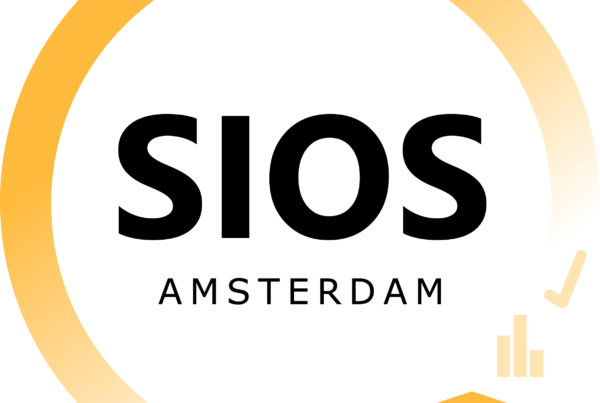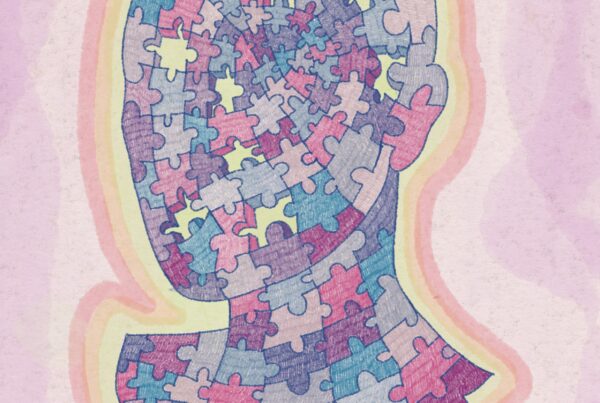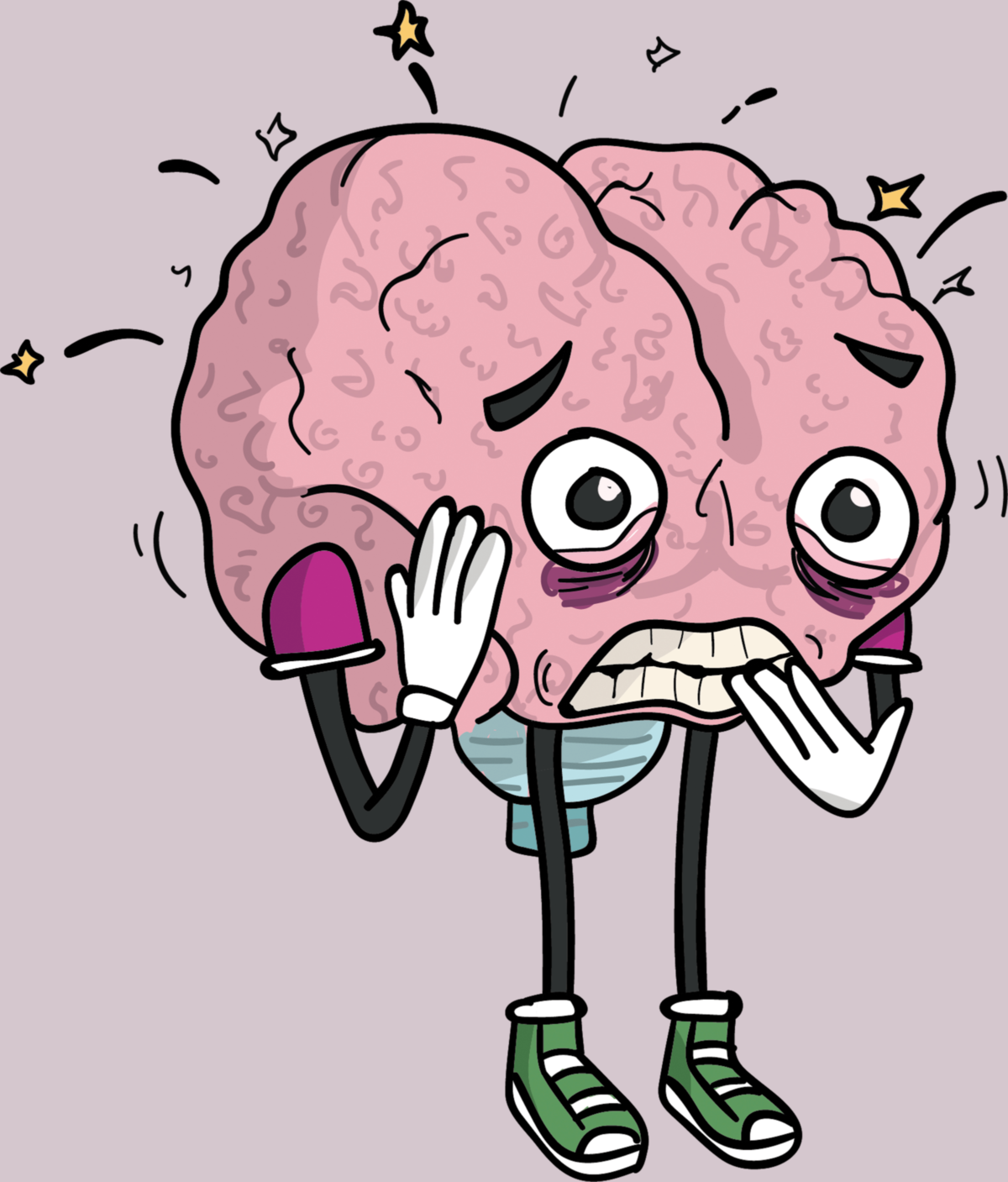
When it comes to treating anxiety, few would argue with the need to reduce stress. However, when it comes to treatment, are the consequences of stress on the hormone system unjustifiably ignored? How do our hormones influence our mental state and is a more holistic approach needed to deal with the ‘burnout’ epidemic?
When it comes to treating anxiety, few would argue with the need to reduce stress. However, when it comes to treatment, are the consequences of stress on the hormone system unjustifiably ignored? How do our hormones influence our mental state and is a more holistic approach needed to deal with the ‘burnout’ epidemic?
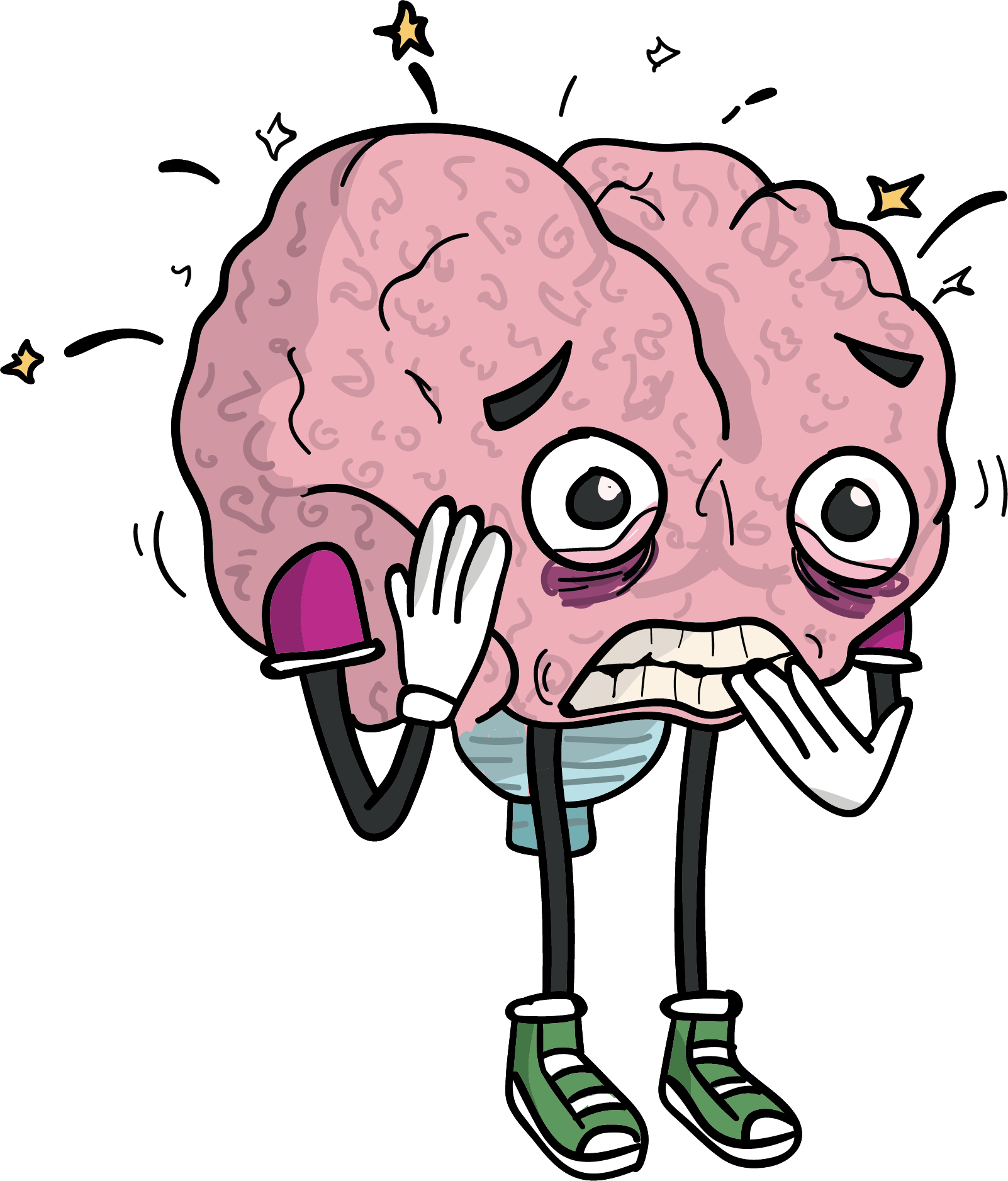
Image by Chitra Mohanlal
I didn’t sleep so well last Friday night. The chances are that there was still some cortisol in my system from my exam earlier in the day. As I pondered over a set of open-ended questions that I had not prepared for, disappointment gradually turned into full-on panic. There is nothing less helpful in this situation than our natural fight-or-flight response. It nags you to leave the room when what you need is a quiet mind to concentrate on formulating your answers. According to Witte Hoogendijk and Wilma de Rek (2018), our fight-or-flight response developed in our evolutionary ancestors when they were living under the sea. It seems that this primitive response was preparing me more for a shark attack than a developmental psychology exam. The book goes on to argue that the fight-or-flight response is being continuously triggered by information overload and it is responsible for the alarming rise of mood, sleep and anxiety disorders.
Could hormones be confounding the diagnosis and treatment of mood disorders? Dr. Jory F. Goodman, a respected psychiatrist specializing in psychoneuroendocrinology, certainly believes so. In a 2013 article for Psychology Today, he shared his experiences of patients with hormonal dysregulation having been diagnosed as bipolar. By having patients keep mood diaries and matching them to their menstrual cycles, he found that some patients just had ‘really, really bad premenstrual syndrome (PMS).’ Dr. Goodman has even seen a similar effect for men which he suspects is due to hypermetabolism of testosterone into estrogen. Having found these patients had abnormal levels of estrogen, he prescribed a course of testosterone replacement, and their symptoms reduced.
The possible link between hormones and psychopathology is nothing new. Freud believed that endocrinology (the hormone system) was the biological component of psychological disorders (Vetö, Marcelo., Silvana, & Sánchez, 2017). In a 1955 paper entitled Psychoendocrinology, Dr. Max Reiss asserted that an endocrine factor should be considered with all psychopathologies and that the probability of a stressful life event leading to a breakdown depends on hormonal equilibrium. While testosterone was one of the first psycho-
pharmaceutic interventions used for depression, the mixed results along with the subsequent discovery of neurotransmitters may explain why the fields of psychiatry and endocrinology have never been reconciled. When a close friend of mine went to her doctor to complain about her really bad PMS, the doctor reassured her that if she reduced her stress, her hormonal balance would restore itself. Three months later she was suffering from chronic anxiety, panic attacks and was referred to a psychiatrist. Diagnosing her as having burnout, he dismissed the possibility of hormonal dysregulation and prescribed anti-depressants. With her mental state still deteriorating, she contacted a private hormone clinic and advised that her low estrogen levels combined with high insulin resistivity were likely to be significant contributors. She certainly seemed a lot less distressed once she started the hormone replacement therapy (HRT) and for her, this proved to be the turning point in her recovery.
Speaking exclusively to Spiegeloog, Dr. Ginny Chamorro, a Dutch gynaecologist, reported a worrying increase in the number of women seeking help with hormone-related mental health problems in the Netherlands. She believes that Cortisol plays a dominant role in it: ‘Cortisol influences the production of other hormones. If this happens for a prolonged period, then hormonal dysregulation can occur. The problem is not so much too much of one hormone or too little of another; it is about balance. Active stress management is crucially important for achieving this.’
“It seems that this primitive response was preparing me for a shark attack”
r. Ginny Chamorro recommends behavioural and lifestyle changes to reduce stress naturally, rather than using hormone replacement therapy (HRT) to support an unhealthy lifestyle. As well as reducing alcohol (which catalyses the metabolism of testosterone into estradiol for both men and women), improving diet and regular exercise, she also recommends less screen time and more time with friends. Boosting oxytocin is the one thing there is never going to be an app for. I failed to find any research linking any form of digital activities with oxytocin release, but your smartphone can be used for biofeedback, which can lead to better stress management (Dillon, Kelly, Robertson A., & Robertson D., 2016). As well as aerobic exercise, a study found yoga is particularly effective at reducing stress and cortisol levels amongst distressed women (Michalsen et al., 2005). Reading a book can also help, Ginny Chamorro’s current reading recommendation is Herstel je Hormonen in 10 Stappen (‘Restore your Hormones in 10 Steps’) by Vivian Reijs (2018). I am not sure if any of these would be allowed during an exam, but I could have brought some gum as research has shown chewing reduces cortisol as well (Tahara, Sakurai, Tomohiko, 2007).
The hormone system seems dynamic, complicated and sensitive; even more so when it interacts with neurocognition. For this reason, it is better to achieve balance through lifestyle changes rather than reaching for testosterone gel and estrogen patches willy-nilly. However, in a case like my friend’s, where an underlying hormonal dysregulation has contributed to a psychological disorder, it appears that giving nature a nudge with HRT can help create the conditions for traditional treatments to be effective. This theory was gaining significant traction at the end of the last millennium before the early termination of a longitudinal study by the US Women’s Health Initiative (WHI) in 2002. Blamed on concerns over breast cancer rates, a recent review by a then member of the WHI steering committee points out that findings were not statistically significant and the women that took part were post-menopausal rather than pre-menopausal (Langer, 2016). He blames the subsequent media hysteria for the cessation of other trials and the lack of research since. This lack of research would seem a shame given the drop in female sex hormones in pre-menopausal women correlates with a significant increase in anxiety disorders (Pacchierotti et al.,2004). Hormone therapy may also have a role to play for teenage girls whose hormone changes in the opposite direction also correlate with an increase in mood and anxiety disorders.
I was surprised to learn that cortisol is released to dampen the flight-or-flight response and actually has an anxiolytic (calming) effect. What I needed during my exam, perhaps, was more cortisol although it also causes a narrowing of the mental focus (centration) and harms memory recall. This anxylotic effect does wear off though, and it also causes increased glucose levels in your muscles that causes them to break down and is linked to heart disease. Other adverse effects include insomnia and reduced labido, common symptoms with most mood disorders. Given that reducing stress by walking out of the exam is not a good strategy, what I should have done is ask for a hug from a willing invigilator.
A good hug would have caused me to produce oxytocin, a natural antidote to cortisol. Nicknamed ‘the love hormone’ because of its role in social bonding and sexual behaviour, oxytocin has an anxiolytic effect and leads to reduced cortisol. Low levels of oxytocin have been implicated in insecure parent-child attachment (Strathearn, 2011) and there is growing optimism that oxytocin therapy can be used to treat addiction (McGregor, & Bowen, 2012) and autism (Yatawara et al., 2016). Oxytocin correlates with various forms of prosocial behaviour bi-directionally. Positive social interactions lead to increased oxytocin levels, and increased oxytocin leads to more altruistic behaviour (Zak, Stanton, & Ahmadi, 2007). As well as hugging and kissing, breast stimulation and orgasms are particularly good for boosting oxytocin production (Carter, 1990). Oxytocin is probably the reason dogs are nicknamed ‘man’s best friend.’ Studies have repeatedly shown that various forms of interaction have oxytocin producing effect for both dog and owner (Peterson et al., 2017).
Dr. Ginny Chamorro recommends behavioural and lifestyle changes to reduce stress naturally, rather than using hormone replacement therapy (HRT) to support an unhealthy lifestyle. As well as reducing alcohol (which catalyses the metabolism of testosterone into estradiol for both men and women), improving diet and regular exercise, she also recommends less screen time and more time with friends. Boosting oxytocin is the one thing there is never going to be an app for. I failed to find any research linking any form of digital activities with oxytocin release, but your smartphone can be used for biofeedback, which can lead to better stress management (Dillon, Kelly, Robertson A., & Robertson D., 2016). As well as aerobic exercise, a study found yoga is particularly effective at reducing stress and cortisol levels amongst distressed women (Michalsen et al., 2005). Reading a book can also help, Ginny Chamorro’s current reading recommendation is Herstel je Hormonen in 10 Stappen (‘Restore your Hormones in 10 Steps’) by Vivian Reijs (2018). I am not sure if any of these would be allowed during an exam, but I could have brought some gum as research has shown chewing reduces cortisol as well (Tahara, Sakurai, Tomohiko, 2007).
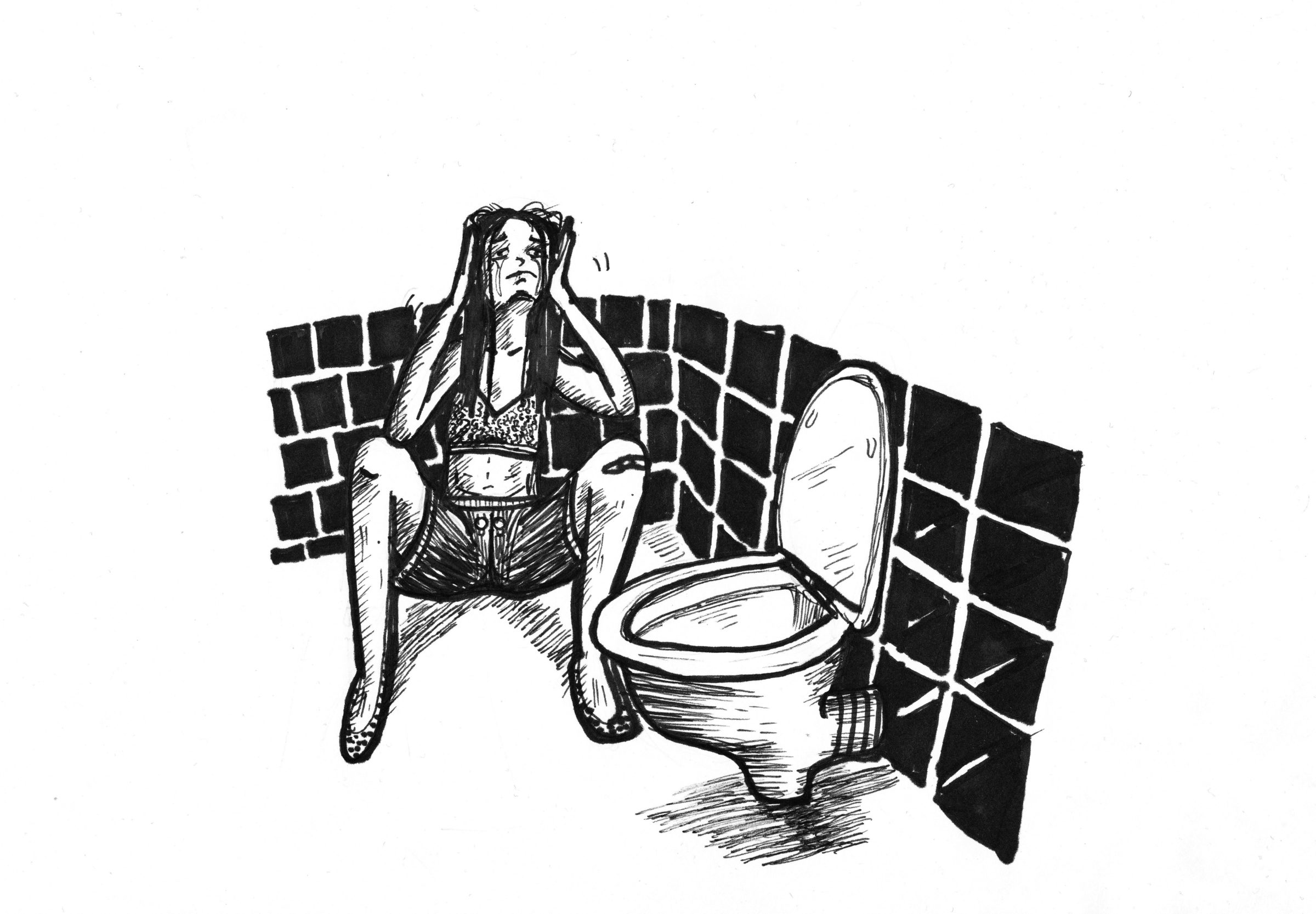
The hormone system seems dynamic, complicated and sensitive; even more so when it interacts with neurocognition. For this reason, it is better to achieve balance through lifestyle changes rather than reaching for testosterone gel and estrogen patches willy-nilly. However, in a case like my friend’s, where an underlying hormonal dysregulation has contributed to a psychological disorder, it appears that giving nature a nudge with HRT can help create the conditions for traditional treatments to be effective. This theory was gaining significant traction at the end of the last millennium before the early termination of a longitudinal study by the US Women’s Health Initiative (WHI) in 2002. Blamed on concerns over breast cancer rates, a recent review by a then member of the WHI steering committee points out that findings were not statistically significant and the women that took part were post-menopausal rather than pre-menopausal (Langer, 2016). He blames the subsequent media hysteria for the cessation of other trials and the lack of research since. This lack of research would seem a shame given the drop in female sex hormones in pre-menopausal women correlates with a significant increase in anxiety disorders (Pacchierotti et al.,2004). Hormone therapy may also have a role to play for teenage girls whose hormone changes in the opposite direction also correlate with an increase in mood and anxiety disorders.
While the link between hormones and anxiety is generally accepted, the assumption seems to be that hormone levels are a symptom rather than a cause. There is an increasing amount of evidence that the interaction is more complicated. What’s more, tracking hormone levels can provide a quantitative measure as to the effects of treatment, rather than relying on self-report. A holistic approach is indeed worth investigation and HRT could prove helpful benefits for both short-term stabilisation and long-term relapse prevention. Given that anxiety has a somatic (physical) component and hormones can heighten our senses, it stands to reason that more intense feelings can cause more extreme emotions that precipitate a psychological disorder. Dr. Reiss (1955) went on to lament that clinical psychology books of his time made an only cursory reference to endocrinology and the same can still be said for textbooks today. As the Smiths put it, ‘Does the body rule the mind or does the mind rule the body? I dunno’ (Still Ill, 1984). Neither do we. <<
References
– Carter, C. S. (1992). Oxytocin and sexual behavior. Neuroscience & Biobehavioral Reviews, 16(2), 131–144.
– Dillon, A., Kelly, M., Robertson, I. H., & Robertson, D. A. (2016). Smartphone Applications Utilizing Biofeedback Can Aid Stress Reduction. Frontiers in Psychology, 7-13.
– Ewbank-Reijs, V., De Wit, D., & Van Riele, J. (2018). Herstel je hormonen in 10 stappen. Utrecht, Netherlands: Kosmos Uitgevers.
– Goodman, J. F. (2013). Hormone Imbalance, Not Bipolar Disorder. Retrieved February 10, 2019, from https://www.psychologytoday.com/us/blog/attention-please/201310/hormone-imbalance-not-bipolar-disorder/.
– Hoogendijk, W., & De Rek, W. (2017). Van big bang tot burn-out: Het grote verhaal over stress. Amsterdam, Netherlands: Balans, Uitgeverij.
– Langer, R. D. (2017). The evidence base for HRT: what can we believe? Climacteric, 20(2), 91–96.
– McGregor, I. S., & Bowen, M. T. (2012). Breaking the loop: Oxytocin as a potential treatment for drug addiction. Hormones and Behavior, 61(3), 331–339.
– Michalsen, A., Grossman, P., Acil, A., Langhorst, J., Luedtke, R., Esch, T., Stefano, G.B., & Dobos, G.J. (2005). Rapid stress reduction and anxiolysis among distressed women as a consequence of a three-month intensive yoga program. Medical science monitor : international medical journal of experimental and clinical research, 11 12, CR555-561.
– Morrisey, S. (1984). Still Ill recorded by The Smiths. On The Smiths [vinyl]. London, United Kingdom: Rough Trade.
Reiss, M. (1955). Psychoendocrinology. Journal of Mental Science, 101(424), 683–695. https://doi.org/10.1192/bjp.101.424.683
– Strathearn, L., Fonagy, P., Amico, J., & Montague, P. R. (2009). Adult Attachment Predicts Maternal Brain and Oxytocin Response to Infant Cues. Neuropsychopharmacology, 34(13), 2655–2666.
– Tahara, Y., Sakurai, K., & Ando, T. (2007). Influence of Chewing and Clenching on Salivary Cortisol Levels as an Indicator of Stress. Journal of Prosthodontics, 16(2), 129–135.
– Vetö, S., & Sánchez, M. (2017). Sigmund Freud and Alejandro Lipschütz. History of the Human Sciences, 30(1), 7–31.
– Yatawara, C. J., Einfeld, S. L., Hickie, I. B., Davenport, T. A., & Guastella, A. J. (2015). The effect of oxytocin nasal spray on social interaction deficits observed in young children with autism: a randomized clinical crossover trial. Molecular Psychiatry, 21(9), 1225–1231.
I didn’t sleep so well last Friday night. The chances are that there was still some cortisol in my system from my exam earlier in the day. As I pondered over a set of open-ended questions that I had not prepared for, disappointment gradually turned into full-on panic. There is nothing less helpful in this situation than our natural fight-or-flight response. It nags you to leave the room when what you need is a quiet mind to concentrate on formulating your answers. According to Witte Hoogendijk and Wilma de Rek (2018), our fight-or-flight response developed in our evolutionary ancestors when they were living under the sea. It seems that this primitive response was preparing me more for a shark attack than a developmental psychology exam. The book goes on to argue that the fight-or-flight response is being continuously triggered by information overload and it is responsible for the alarming rise of mood, sleep and anxiety disorders.
Could hormones be confounding the diagnosis and treatment of mood disorders? Dr. Jory F. Goodman, a respected psychiatrist specializing in psychoneuroendocrinology, certainly believes so. In a 2013 article for Psychology Today, he shared his experiences of patients with hormonal dysregulation having been diagnosed as bipolar. By having patients keep mood diaries and matching them to their menstrual cycles, he found that some patients just had ‘really, really bad premenstrual syndrome (PMS).’ Dr. Goodman has even seen a similar effect for men which he suspects is due to hypermetabolism of testosterone into estrogen. Having found these patients had abnormal levels of estrogen, he prescribed a course of testosterone replacement, and their symptoms reduced.
The possible link between hormones and psychopathology is nothing new. Freud believed that endocrinology (the hormone system) was the biological component of psychological disorders (Vetö, Marcelo., Silvana, & Sánchez, 2017). In a 1955 paper entitled Psychoendocrinology, Dr. Max Reiss asserted that an endocrine factor should be considered with all psychopathologies and that the probability of a stressful life event leading to a breakdown depends on hormonal equilibrium. While testosterone was one of the first psycho-
pharmaceutic interventions used for depression, the mixed results along with the subsequent discovery of neurotransmitters may explain why the fields of psychiatry and endocrinology have never been reconciled. When a close friend of mine went to her doctor to complain about her really bad PMS, the doctor reassured her that if she reduced her stress, her hormonal balance would restore itself. Three months later she was suffering from chronic anxiety, panic attacks and was referred to a psychiatrist. Diagnosing her as having burnout, he dismissed the possibility of hormonal dysregulation and prescribed anti-depressants. With her mental state still deteriorating, she contacted a private hormone clinic and advised that her low estrogen levels combined with high insulin resistivity were likely to be significant contributors. She certainly seemed a lot less distressed once she started the hormone replacement therapy (HRT) and for her, this proved to be the turning point in her recovery.
Speaking exclusively to Spiegeloog, Dr. Ginny Chamorro, a Dutch gynaecologist, reported a worrying increase in the number of women seeking help with hormone-related mental health problems in the Netherlands. She believes that Cortisol plays a dominant role in it: ‘Cortisol influences the production of other hormones. If this happens for a prolonged period, then hormonal dysregulation can occur. The problem is not so much too much of one hormone or too little of another; it is about balance. Active stress management is crucially important for achieving this.’
“It seems that this primitive response was preparing me for a shark attack”
r. Ginny Chamorro recommends behavioural and lifestyle changes to reduce stress naturally, rather than using hormone replacement therapy (HRT) to support an unhealthy lifestyle. As well as reducing alcohol (which catalyses the metabolism of testosterone into estradiol for both men and women), improving diet and regular exercise, she also recommends less screen time and more time with friends. Boosting oxytocin is the one thing there is never going to be an app for. I failed to find any research linking any form of digital activities with oxytocin release, but your smartphone can be used for biofeedback, which can lead to better stress management (Dillon, Kelly, Robertson A., & Robertson D., 2016). As well as aerobic exercise, a study found yoga is particularly effective at reducing stress and cortisol levels amongst distressed women (Michalsen et al., 2005). Reading a book can also help, Ginny Chamorro’s current reading recommendation is Herstel je Hormonen in 10 Stappen (‘Restore your Hormones in 10 Steps’) by Vivian Reijs (2018). I am not sure if any of these would be allowed during an exam, but I could have brought some gum as research has shown chewing reduces cortisol as well (Tahara, Sakurai, Tomohiko, 2007).
The hormone system seems dynamic, complicated and sensitive; even more so when it interacts with neurocognition. For this reason, it is better to achieve balance through lifestyle changes rather than reaching for testosterone gel and estrogen patches willy-nilly. However, in a case like my friend’s, where an underlying hormonal dysregulation has contributed to a psychological disorder, it appears that giving nature a nudge with HRT can help create the conditions for traditional treatments to be effective. This theory was gaining significant traction at the end of the last millennium before the early termination of a longitudinal study by the US Women’s Health Initiative (WHI) in 2002. Blamed on concerns over breast cancer rates, a recent review by a then member of the WHI steering committee points out that findings were not statistically significant and the women that took part were post-menopausal rather than pre-menopausal (Langer, 2016). He blames the subsequent media hysteria for the cessation of other trials and the lack of research since. This lack of research would seem a shame given the drop in female sex hormones in pre-menopausal women correlates with a significant increase in anxiety disorders (Pacchierotti et al.,2004). Hormone therapy may also have a role to play for teenage girls whose hormone changes in the opposite direction also correlate with an increase in mood and anxiety disorders.
I was surprised to learn that cortisol is released to dampen the flight-or-flight response and actually has an anxiolytic (calming) effect. What I needed during my exam, perhaps, was more cortisol although it also causes a narrowing of the mental focus (centration) and harms memory recall. This anxylotic effect does wear off though, and it also causes increased glucose levels in your muscles that causes them to break down and is linked to heart disease. Other adverse effects include insomnia and reduced labido, common symptoms with most mood disorders. Given that reducing stress by walking out of the exam is not a good strategy, what I should have done is ask for a hug from a willing invigilator.
A good hug would have caused me to produce oxytocin, a natural antidote to cortisol. Nicknamed ‘the love hormone’ because of its role in social bonding and sexual behaviour, oxytocin has an anxiolytic effect and leads to reduced cortisol. Low levels of oxytocin have been implicated in insecure parent-child attachment (Strathearn, 2011) and there is growing optimism that oxytocin therapy can be used to treat addiction (McGregor, & Bowen, 2012) and autism (Yatawara et al., 2016). Oxytocin correlates with various forms of prosocial behaviour bi-directionally. Positive social interactions lead to increased oxytocin levels, and increased oxytocin leads to more altruistic behaviour (Zak, Stanton, & Ahmadi, 2007). As well as hugging and kissing, breast stimulation and orgasms are particularly good for boosting oxytocin production (Carter, 1990). Oxytocin is probably the reason dogs are nicknamed ‘man’s best friend.’ Studies have repeatedly shown that various forms of interaction have oxytocin producing effect for both dog and owner (Peterson et al., 2017).
Dr. Ginny Chamorro recommends behavioural and lifestyle changes to reduce stress naturally, rather than using hormone replacement therapy (HRT) to support an unhealthy lifestyle. As well as reducing alcohol (which catalyses the metabolism of testosterone into estradiol for both men and women), improving diet and regular exercise, she also recommends less screen time and more time with friends. Boosting oxytocin is the one thing there is never going to be an app for. I failed to find any research linking any form of digital activities with oxytocin release, but your smartphone can be used for biofeedback, which can lead to better stress management (Dillon, Kelly, Robertson A., & Robertson D., 2016). As well as aerobic exercise, a study found yoga is particularly effective at reducing stress and cortisol levels amongst distressed women (Michalsen et al., 2005). Reading a book can also help, Ginny Chamorro’s current reading recommendation is Herstel je Hormonen in 10 Stappen (‘Restore your Hormones in 10 Steps’) by Vivian Reijs (2018). I am not sure if any of these would be allowed during an exam, but I could have brought some gum as research has shown chewing reduces cortisol as well (Tahara, Sakurai, Tomohiko, 2007).

The hormone system seems dynamic, complicated and sensitive; even more so when it interacts with neurocognition. For this reason, it is better to achieve balance through lifestyle changes rather than reaching for testosterone gel and estrogen patches willy-nilly. However, in a case like my friend’s, where an underlying hormonal dysregulation has contributed to a psychological disorder, it appears that giving nature a nudge with HRT can help create the conditions for traditional treatments to be effective. This theory was gaining significant traction at the end of the last millennium before the early termination of a longitudinal study by the US Women’s Health Initiative (WHI) in 2002. Blamed on concerns over breast cancer rates, a recent review by a then member of the WHI steering committee points out that findings were not statistically significant and the women that took part were post-menopausal rather than pre-menopausal (Langer, 2016). He blames the subsequent media hysteria for the cessation of other trials and the lack of research since. This lack of research would seem a shame given the drop in female sex hormones in pre-menopausal women correlates with a significant increase in anxiety disorders (Pacchierotti et al.,2004). Hormone therapy may also have a role to play for teenage girls whose hormone changes in the opposite direction also correlate with an increase in mood and anxiety disorders.
While the link between hormones and anxiety is generally accepted, the assumption seems to be that hormone levels are a symptom rather than a cause. There is an increasing amount of evidence that the interaction is more complicated. What’s more, tracking hormone levels can provide a quantitative measure as to the effects of treatment, rather than relying on self-report. A holistic approach is indeed worth investigation and HRT could prove helpful benefits for both short-term stabilisation and long-term relapse prevention. Given that anxiety has a somatic (physical) component and hormones can heighten our senses, it stands to reason that more intense feelings can cause more extreme emotions that precipitate a psychological disorder. Dr. Reiss (1955) went on to lament that clinical psychology books of his time made an only cursory reference to endocrinology and the same can still be said for textbooks today. As the Smiths put it, ‘Does the body rule the mind or does the mind rule the body? I dunno’ (Still Ill, 1984). Neither do we. <<

